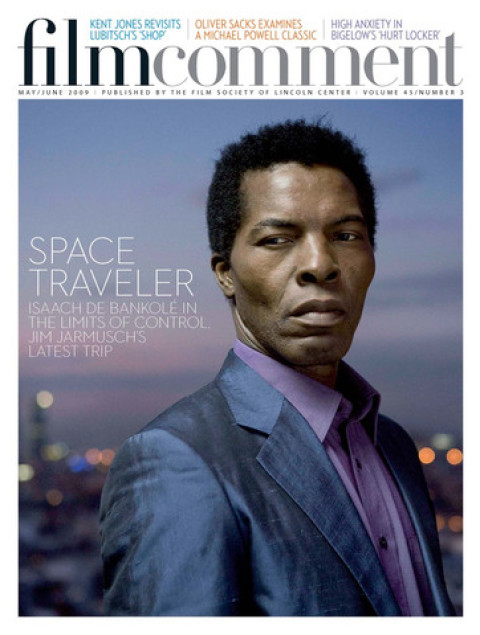Sex workers who advertise “the girlfriend experience,” will, for the right price, tongue-kiss you, cuddle, listen to your boring stories about setting up a 529 plan for your kid, your thoughts about Man on Wire, your worries about whether your next TV show will get produced. In The Girlfriend Experience, the director takes your money and gives you a quick hand-job.

Soderbergh’s second movie (after 2005’s Bubble) to be shot—by the director himself—in high-def video using a mostly nonprofessional cast for 2929 Entertainment, and the second (after Che) to use the Red One camera, The Girlfriend Experience was shot in 16 days last October, almost entirely in New York City (the Hudson Valley and Las Vegas have bit parts). Congress has just passed the bailout; Biden and Palin are debating; and expensive escort Chelsea (porn star Sasha Grey) frequently finds herself having to assuage the money anxieties of her upscale clientele. Diary of a call girl: “October 25. Met with Dennis. Lunch at Nobu. We talked about the financial crisis. I wore Kiki de Montparnasse lingerie,” Chelsea recalls affectlessly, one of several times that high-end goods, eateries, and shops are either name-checked or actually seen. But Chelsea has business worries of her own: launching her boutique, optimizing search-engine results for her site, competing with other working girls, receiving a scathing review from an online hobbyist called the Erotic Connoisseur (former Premiere critic Glenn Kenny). And she has a real-boyfriend experience to deal with. Personal-trainer beau Chris (Chris Santos) is enraged that she’s going away for the weekend with a client; Chelsea, an acolyte of “personology,” thinks she may have a special connection with him because their “birthdays match up really well.”
The parallels between Chelsea’s profession, the world’s oldest, and Chris’s, one of the world’s newest, become obvious: “Let’s have you look at a bigger package . . . I don’t think this relationship is going to end anytime soon,” Chris says, trying to goad a client into buying more one-hour sessions. What The Girlfriend Experience—co-scripted by Brian Koppelman and David Levien (who also co-wrote Ocean’s 13) but incorporating improv—does best is capture the way language has been vitiated by meaningless marketing-speak. “Language is the house man lives in,” notes the main character of Godard’s Two or Three Things I Know About Her—which, along with Vivre sa vie, provides TGE’s prostitution-as-metaphor template. In TGE, that house has been swallowed up by subprime lending.

Documenting the way we speak now, however, doesn’t compensate for the film’s own hollow rhetoric; TGE’s tricked-out, fractured narrative merely distracts from its dead-end cynicism. We’re all either whores or johns; even worse, everyone’s a critic, as the film’s two buskers sing. Sex is business and business is sex: “Let’s talk about the stimulus of our own packages,” snickers one of Chris’s moneyed asshole clients on a private plane en route to a boys’ bacchanalia in Vegas. Apply the reductive logic to your own life and profession, as Soderbergh has to filmmaking.
As an acting experiment, the decision to use 20-year-old XXX star Sasha Grey—making her “legit” screen debut here—doesn’t really compete with Catherine Breillat’s collaboration with Rocco Siffredi—or John Waters’s with Traci Lords. Compare Chelsea with another NYC high-class call girl, Bree Daniels, in Klute. In Alan J. Pakula’s 1971 film, Jane Fonda’s character becomes a curious symbol of anxiety over second-wave feminism; Fonda’s off-screen life as an activist heightens the frisson between actress and character. Grey’s star persona simply becomes redundant with her role in TGE, leading to an echo chamber of empty referents. “If they wanted you to be yourself, they wouldn’t be paying you,” Chelsea says to Mark, a reporter (real-life journo Mark Jacobson), at Craftsteak. But Chelsea/Grey’s act—and Soderbergh’s—doesn’t seem worth buying, either.








